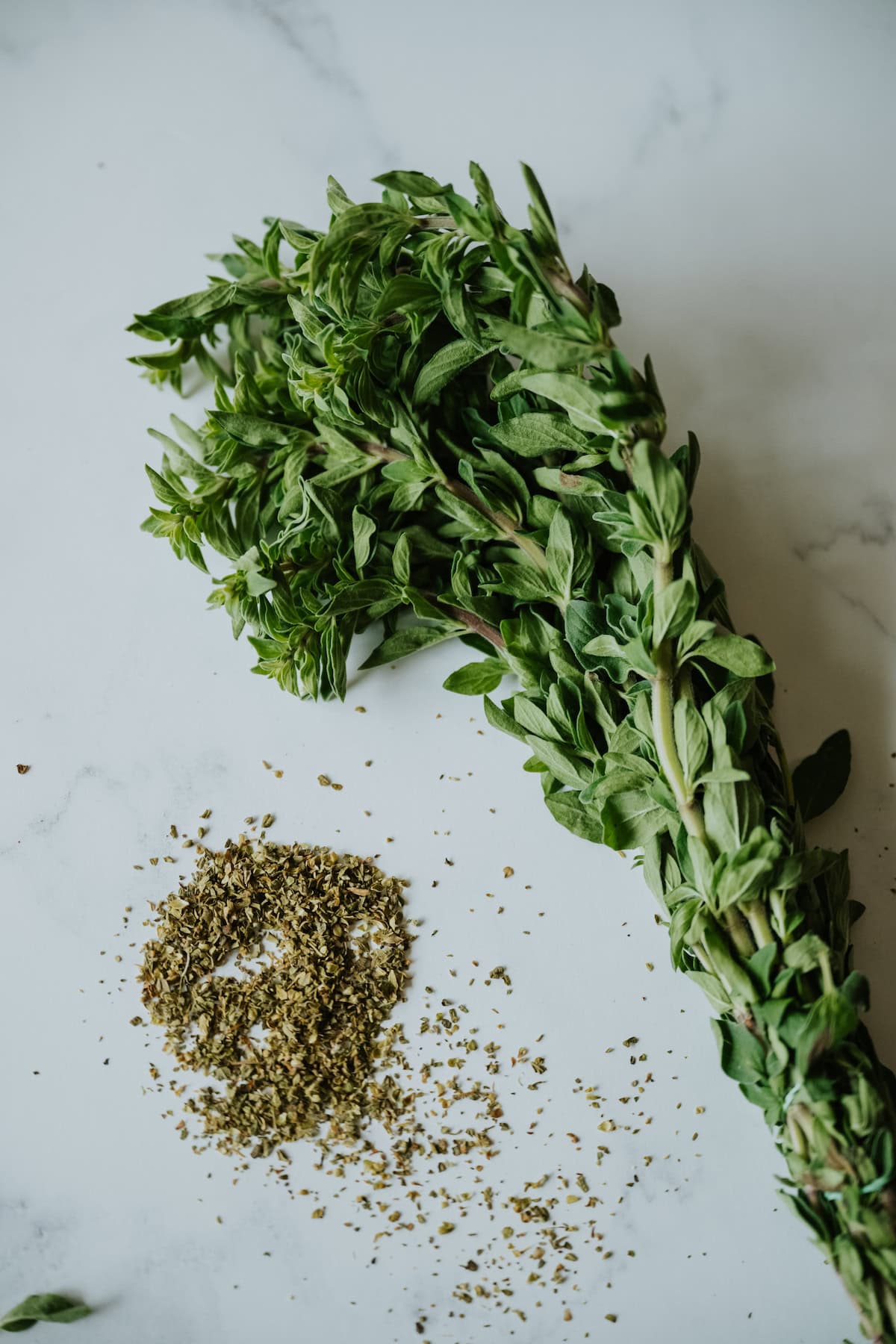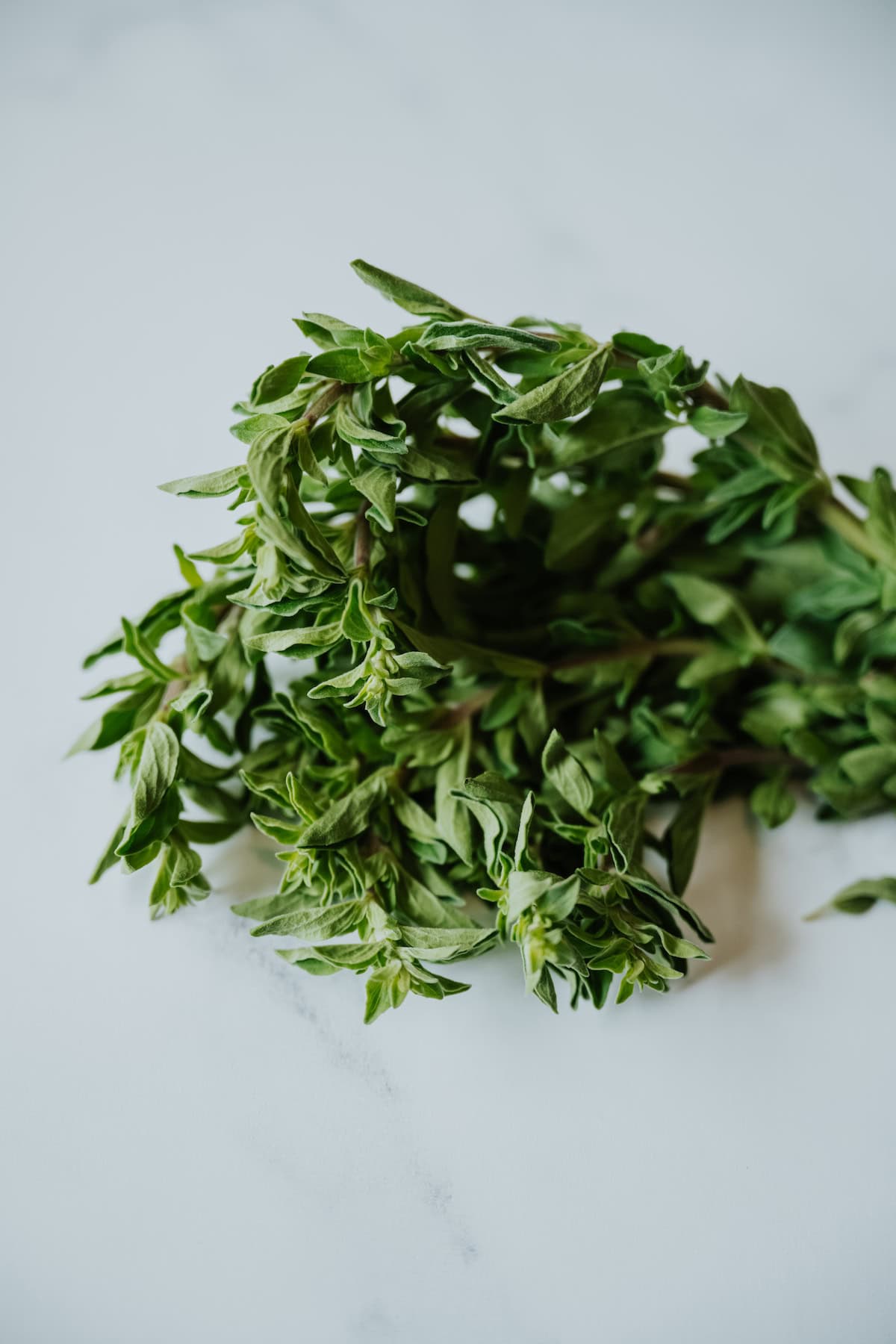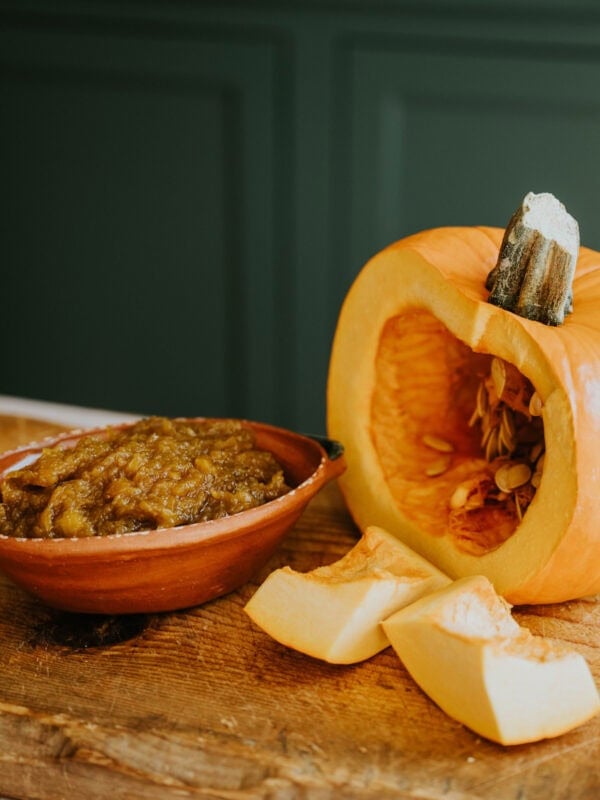What Is Mexican Oregano? All About This Delicious Mexican Herb
1
Published May 10, 2024
This post may contain affiliate links. Please read our disclosure policy.
If you’re a fan of cooking Mexican food at home, chances are you’ve seen recipes that call for Mexican oregano. But, what is Mexican oregano, and how is it different from the oregano you have in your spice cabinet? Get ready to learn all about how this delightful herb can transform your cooking!

Mexican Oregano vs Oregano: A Tale of Two Herbs
When we talk about “oregano,” most Americans think of the classic herb that’s popular in Italian and Mediterranean cooking. So, when someone hears “Mexican oregano” it’s natural to think the two are interchangeable. As it turns out, while these two herbs are both delicious in their own right, they’re different in nearly every way possible.
Mediterranean oregano, or “true oregano” is part of the mint or Lamiaceae family and is native to Europe and the Middle East. In the US, it’s often used as a seasoning for Italian and Greek dishes, where it has been a staple ingredient for centuries. Scientifically known as Origanum vulgare, it is closely related to other familiar herbs like thyme, basil, and mint.
Oregano mexicano hails from an entirely different plant family — verbena or Verbenaceae. Scientifically referred to as Lippia graveolens, it is native to the high altitudes of northern Mexico and the southwestern United States. It is closely related to lemon verbena and tastes more like marjoram than Greek oregano.
FUN FACT: While Americans refer to Mediterranean oregano as just “oregano,” Mexicans refer to Mexican oregano as just “oregano” and call the Italian version “Mediterranean oregano.”
What does Mexican oregano taste like?
The flavors of these two herbs are where the differences become even more pronounced. Using one in place of the other can markedly change the flavor of a dish, so it’s important to use the right kind of oregano for your recipe.
Regular oregano is mild, sweet, and peppery, with a slightly bitter, earthy, and minty flavor. It’s a perfect match for tomato-based dishes, meats, and cheeses.
Mexican oregano, on the other hand, offers a boldly complex flavor that is earthy, pungent, and slightly citrusy with hints of mild licorice. While it has a stronger flavor profile, it’s less bitter than traditional oregano. It’s particularly good in dishes made with chile, bean dishes, and salsas, where its more assertive flavor can really shine without being overpowering.
How to Use Mexican Oregano
This deliciously versatile herb has approximately a gazillion different uses in the kitchen, so prepare to have fun experimenting. In Mexican households, you’ll often find it on the kitchen table like pepper or salt — especially when something cozy like pozole verde or menudo is on the menu.
As a general rule, I like to crush the oregano leaves between my palms before adding them to any dish. This helps to release more of its essential oils, which means more of its flavor.
Some of my favorite recipes with Mexican oregano include:
- Rich, meaty dishes like asado de puerco, barbacoa, pork carnitas, short ribs, or beef birria.
- Bean-centric dishes like chili beans.
- Cozy stews like red chicken pozole and pork green chile.
While it’s a staple in traditional Mexican cooking, don’t hesitate to experiment with Mexican oregano in other cuisines. It’s the perfect way to add depth and a hint of zest to any dish that could use a flavorful, citrusy kick.
But, beyond its many uses in the kitchen, Mexican oregano has also been a popular holistic remedy for centuries. Its essential oils have antiviral and antibacterial properties, so it’s often used to help with digestive issues, respiratory tract disorders, and to relieve pain. Next time you’re feeling under the weather, sip on some Te de Oregano — it always makes me feel better.

Where to Buy Mexican Oregano
While it used to be considered something of a “specialty herb,” nowadays you can find dried Mexican oregano in many American grocery stores. If it’s not in the spice aisle, check the international aisle.
If you can’t find it at your local grocer, any Latin supermercado or international grocery store should carry it. You can also find it online!
Finally, if you’re a green thumb like me, consider getting a Mexican oregano plant for your salsa garden. It’s an attractive perennial with large green leaves and delicate white flowers, and it can grow up to 5 feet tall!
Mexican Oregano Substitutes
While this delicious herb has a unique flavor profile, there are times when you might need a substitute if it’s unavailable. Here are some acceptable alternatives:
- Marjoram – Though milder than Mexican oregano, marjoram has similar earthy and citrusy undertones. It’s less potent though, so you may need to use a bit more to achieve a comparable flavor intensity.
- Lemon Verbena – This close cousin to Mexican oregano has a strong lemony flavor that can brighten dishes in a similar way.
- Mediterranean Oregano – In a pinch, Mediterranean oregano can be used. It lacks the citrusy and licorice notes but will still contribute a similar earthiness. Consider blending it with a pinch of lemon zest or coriander and a pinch of tarragon or anise to better mimic Mexican oregano’s flavor profile.
- Dried Thyme – With a minty, earthy flavor that’s similar to regular oregano, thyme is also fine in a pinch. Like Mediterranean oregano, I recommend blending it with citrusy, licorice-y herbs to create a more passable substitute.
Frequently Asked Questions
While both are common in Mexican cuisine, Mexican oregano and cilantro are not the same. Cilantro comes from the coriander plant and is a member of the parsley family (vs. Mexican oregano, which is part of the vervain family). It features a fresh, citrusy flavor (compared to Mexican oregano’s earthy, citrusy flavor), and is usually used in its fresh form, whereas Mexican oregano is often used as a dried herb.
Yes! In Mexico, you may hear it referred to as oregano cimarrón (wild oregano) or hierba dulce (sweet herb).
No, I wouldn’t call Mexican oregano spicy — but Mediterranean oregano does have some spicy qualities. The earthy Mexican herb has a bright, citrusy undertone with a hint of licorice flavor.
It sure is! Plant once and enjoy year after year.
Alright, amigos! You’re now experts on the different types of oregano. How are you going to put your new knowledge to use? Let me know in the comments below! I can’t wait to see what tasty things you cook up.













Hi, I enjoy your blog. Could you do a similar post on epazote? Thanks very much.